The Rise And Fall Of The Obscure Music Download Blog: A Roundtable
by Mark Allen
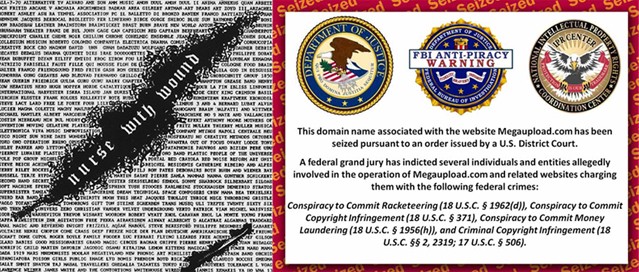
A series about internet history.
One internet music “sharing” trend largely unnoticed by the powers that sue was the niche explosion of obscure music download blogs, lasting roughly from 2004–2008. Using free filesharing services like Rapidshare and Mediafire, and setting up sites on Blogspot and similar providers, these internet hubs stayed hidden in the open by catering to more discerning kleptomaniac audiophiles. Their specialty: parceling out ripped recordings — many of them copyrighted — from the more collectible and unknown corners of music’s oddball, anomalous past.
While the RIAA was suing dead people for downloading Michael Jackson songs (and Madonna was using Soulseek to curse at teenagers), obscure music blogs racked up millions of hits, ripping and sharing 80s Japanese noise, 70s German prog, 60s San Francisco hippie freak-outs, 50s John Cage bootlegs, 30s gramophone oddities, Norwegian death metal, cold wave cassettes made by kids in their garages, and the like. It was the mid aughts, and the advent of digitization had inadvertently put the value of the music industry’s “Top Ten” commercial product in peril. That same process transformed the value of old, collectible music as well. If one smart record collector was able to share the entire contents — music, artwork and all — of one vinyl LP on his blog, for free, and upload another item from his 1,000+ collection the next day, for weeks and years, and others like him did the same, competing with each other about who could upload the rarest and most sought-after record, and anyone who downloaded it could then share it again and again… Suddenly everyone in the world had the coolest record collection in the world; and soon, nobody in the world had the coolest record collection in the world.
Obscure music download blogs weren’t shut down like Napster or Megaupload were (though they were indirectly affected by that crackdown); they just, mysteriously, seemed to burn out on their own sometime around 2008. While some are still around, their number represents only a fraction of that mid-00s heyday. Was this because obscure music blogs had overshared the underexposed and blown the whole thing into oblivion? Is the fact that a guy in Japan will no longer pay $500 on eBay for a first pressing of the No New York compilation because he can find it for free on the internet good for the world? Was the commodity-lost but the knowledge-gained an even exchange? To explore what was going on then, I assembled this email roundtable discussion between creators of some of the most popular blogs of the time: Eric Lumbleau of Mutant Sounds, Liam Elms of 8 Days in April, Frank of Systems of Romance and Brian Turner, Music Director of WFMU.
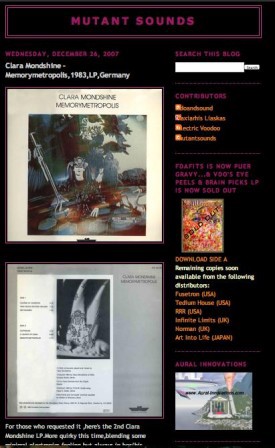
Mark Allen: Do you remember the earliest days of obscure music sharing blogs? How did they start?
Brian Turner/WFMU: In the initial days of music blogs, I’d say 2004–2008, there was certainly a race to be at the top of the share heap, to garner attention, to come up with the most fascinating albums or artists to spotlight, and I think that a lot of authors really blew out the depth of knowledge they had quickly.
Liam Elms/8 Days In April: It was around late 2004 with the demise of a file sharing service called Q-File. In those days RapidShare’s maximum file size was 30 megs, split archives not allowed, and people would put one half of an album on Q-File and the other half on RapidShare. With the sudden demise of Q-File, suddenly all these blogs had not one downloadable album, and they disappeared. The only one whose name I remember is That Girl Needs Therapy. Around this time I started uploading one album a week to this site, the name of which I can’t remember. After a few months I got tired of this guy editing my little blurbs that described the album, and I decided to start my own blog. The very first day I had 1,500 hits, so I knew I had tapped into something. I can’t tell you how many comments I got from people that said something like “I’m starting my own blog!” I’m not saying that I’m responsible for the explosion of obscure music blogs, but from my blog many people saw that it was an easy thing to do and they suspected that it would be fun, and they were right!
Eric Lumbleau/Mutant Sounds: The initial eruption of music share blogging, circa-2006, was because the tools were suddenly there to do so via Blogger and Rapidshare. If new tools to reproduce and share media are handed to people, they can be expected to use them. At the time that I entered this arena in ’07, Mutant Sounds had already existed for several months under blog founder Jim’s command and had a blossoming cult reputation. My decision to become involved in music share blogging was down to a serendipitous combination of my enthusiasm for what blog founder Jim was doing at the outset and the threat of Mutant suddenly evaporating after a flame war on a comment board made Jim publicly question going forward in the early days of the blog.
This caused me to leap into the fray and offer my aid, since we were both equally versed in the same veins of fringe musical activity and the cultural arcana that surrounded it and had the creaking shelves to show for it. But it also became immediately clear to me that doing this would open up all sorts of other amusing possibilities for cultural intervention by re-writing what I perceived as a hopelessly flawed and inaccurate cultural history. Since I’m mostly occupied with creative work connected to my band Vas Deferens Organization, and my label Puer Gravy, my sense of involvement in the music share blogosphere is limited to making my own little playpen within this realm and the possibilities that affords, but I’ve never been either that ideologically invested in it as a movement or, after a few months of relentless downloading back in ’07, as a consumer, so my relationship to this necessarily differs from others who have thrown all their energies in doing this sort of thing.
Frank Deserto/Systems of Romance: I’ve always felt the reason for the rise (and fall) of music downloading blog culture has everything to do with the internet’s growing expansion. Until the early 2000s, my experiences with the internet were limited to looking up song lyrics, writing an email to an old friend, very pedestrian sort of things. Once everyone jacked in and connections became faster and more stable, the sharing community grew. Instead of trading tapes and CD-rs as we had in the past, we could now upload mp3s. It’s my understanding that the kind of music many of these blogs feature was much more affordable in the 1990s and early 2000s, as copies were limited to their native countries, and finding them through Ebay took a little more know-how. Not only did this (as well as us bloggers sharing the material) drive up the prices of many hard to find records, it opened up this entire world of forgotten gems that were finally getting discovered — and in the new wave spectrum — some of it was just as good, if not better, than the popular songs and bands.
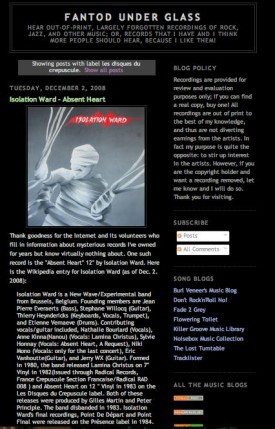
Mark Allen: Is it shaky to begin with, building an archival library that relies on services like Mediafire and Rapidshare? Like what happened last year with Megaupload?
Brian Turner: As a music collector myself, I’m really, REALLY paranoid about throwing my collection in the singular hands of any digital entity acting as overlords, you just never know.”
Liam Elms: I used RapidShare exclusively when I started the blog, they were much friendlier to free users back in those days. My files were generally safe from deletion, unless the links were re-posted on a public forum. This only lasted a couple years, when trolls discovered they could get links deleted by complaining to the file hoster, and evidently it became a sport, a fun thing to do. So for me the shakiness was never never about a file hoster going down, it was about random internet assholes.
Eric Lumbleau: Shaky is an understatement. I’m sure the Megaupload thing was the breaking point for many, either because they lost files or because they felt menaced by our government officials doing the mercenary bidding of the MPAA and RIAA, and felt there were more boot heels yet to come down from our lawless elites. Mediafire arbitrarily deletes files constantly, so they’re to be discounted out of hand and I’d advise any newbie to avoid them like syphilis. Thus, it’s proven to be the case that over the long run, Rapidshare is really the only man left standing that makes continuing on with any of this blog sharing business still viable. And they in turn have us all by the short hairs. As such, they just ass raped a whole universe of people beyond the damage already done by the closure of Megaupload, via their recent deletion of all content that’s either not connected to a paid user account or to an account that you’ve signed into before uploading. With that, they killed off 6 times the content on Mutant Sounds that the removal of Megaupload did (half since re-upped again). But as they have a virtual monopoly on this game now and since all my files that were connected to my paid account with them survived intact, I have no choice but to just grit my teeth and re-load all my old deleted content right back onto their system again, a feeling somewhat akin to being asked to lick your lips after someone shits on your head, but there ya go.
Frank Deserto: As for the death of most blogs — it’s simple. I believe that more than lack of spare time, interest, etc.… it’s these paranoid times that are killing off many of the blogs we know and love. We live in an era that is now overly policed. Free music is now expected by the masses and the industry is broken beyond repair. When met with a mandatory shutdown, most bloggers are happy to throw in the towel, and I can sympathize with the frustration of having to start from scratch. I’ve been one of many casualties of the file sharing site crackdown (which caused me to take the next step and start my own domain), and while I can’t say I blame people for trying to take back control of their livelihoods, the truth is that many of the blogs and servers being shut down are false targets. I highly doubt that sharing an out-of-print, private label French cold wave cassette was cause enough for the RIAA to flag down a file, it’s just that similar names and a lack of discretion by these services tends to lead to unnecessary casualties. Not that we’re innocent, as there’s a definite moral grey area here, but I think bloggers are doing more good than they are harm, so long as the material they are unearthing is out of print. While I can count the times I’ve been asked to take down a post on one hand (and most have been nice, mind you), I’ve received countless positive emails and even befriended many of the artists I’ve posted, most of which are ecstatic that their work has this new platform for discovery and appreciation. Many reissue labels owe a debt to bloggers as well, and they are taking the next step in making this music available for everyone to support. People who download just need to understand that they should support the artists whenever possible- so if a reissue happens to materialize, do the right thing and pick up a copy. I’ve always encouraged this and frown down on blogs that post material that is very much in print.
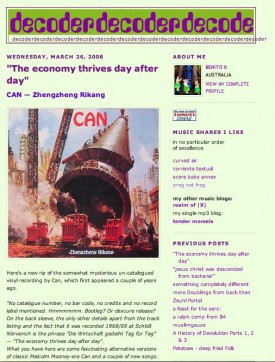
Mark Allen: Back in 2006, I could just Google an artist’s name and album title, followed by “rar” or “rar blogspot” and I would instantly be lead to links of several blogs with access to these works. In 2012, when I try that, all the resulting links lead to what seem like automatic web-crawling spam sites, like RapidShare4U or FilesTube, that seem to have absorbed the text and images from old, dead music-download blogs and weirdly re-formatted them next to ads for Viagra and cam girl sites. Trying to download LPs through them is like a hall of mirrors, trying to get you to buy download services that don’t even exist.
Frank Deserto: Well, there are definitely clone blogs out there — some bloggers who just copy and paste (mostly by bot or script- though some just trying to grab a piece of the pie without putting in the effort) and steal content from other sources. When those sources dry up or disappear for whatever reason, this information just gets cluttered and reduced to spam, kind of like shadows or spectres. The internet is cluttered with this now. Very few of those links actually work, lost in the internet graveyard, and it’s for this reason, the sheer frustration and sad state, that I feel the need to continue, or at least keep the old links alive should I decide to pursue something else. However, over five years and I’m still going, and I’m hoping that’s a testament to how great this music is and how it deserves to be heard en masse by anyone willing to listen.
Eric Lumbleau: The aggregated links on some of those services like Filestube are very much active a lot of the time, so they certainly can prove useful. Mediafire offers you the same kind of pop up spam whenever you download from them, so that sorta thing just comes with the territory, I suppose.
Liam Elms: I really don’t know what to think about sites like that though I find them useful for episodes of old television shows!
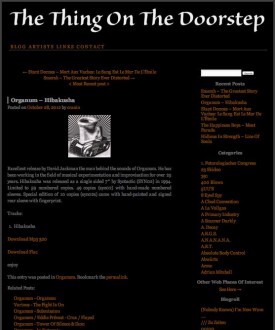
Mark Allen: Will mining obscure music’s past EVER reach an end?
Eric Lumbleau: Doubtful.
Brian Turner: After a while, you have to start digging deeper and deeper into the internet to come up with true gems. Also, there’s obviously millions of already-existing records, tapes, and CDs that can be revisited, it’s just a matter of how long you can stretch out exploring the vaults, though as links expire, memory can be short in peoples’ minds, you can always revisit things that have already been re-re-posted. I wonder how much this whole music bloggery will actually influence bands of the future. As one example; you already see a whole slew of young kids who weren’t even born when those Flying Nun New Zealand records of the 80s were out, totally filtering that sound into their new bands, in big part due to the internet. People want to look for arbiters and gatekeepers that can show them things they haven’t experienced.
Liam Elms: Will it reach an end? I really don’t think so. To this day I still occasionally “discover” some 70s band that was really good. The early 70s was a real fertile era for rock music, and so many great albums were released, that many brilliant albums simply never got noticed by the record-buying public.
Frank Deserto: No. There is always another rock to be overturned. Many of us bloggers who chat and share with each other have lists of materials they’re hoping to find, picking away at them one by one. Sometimes it takes years and years of searching to get a lead, only to lose out to the highest bidder on eBay. Those are just the releases we know about. Most of the recent posts I’ve made this year focus on demo tapes that were never known to exist, so I’m sure there will always be something out there. Even if we reach a palpable stopping point, with every relic uncovered, there’s always the possibility of finding and digitizing better sounding copies, a project I’ve been working on as a record collector, DJ, and unfortunate on-the-go-music listener.
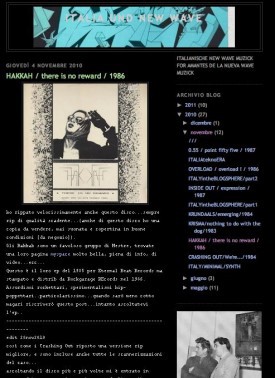
Mark Allen: What are your thoughts on blogs that find self-made cassettes from bedroom music acts from the 80s and upload them to an audience that has a global reach, sort of resurrecting these homemade music careers in a way no one could dream of back then?
Brian Turner: I think the cassette-oriented blogs are among the most valuable. It’s an extremely limited release in a format that may eventually deteriorate needs preservation. Awesome Tapes from Africa is an especially good example, where is anyone gonna get a chance to hear this stuff otherwise? Also, labels like Dais and Dark Entries are great, they’re taking band artifacts like Deviation Social or Vita Noctis tapes from the 80s and putting them out on vinyl. These artists get an entire new audience.
Eric Lumbleau: I’m sure it’s been something of a shock for some of these folks to see their long-forgotten and moldering old tapes revived and celebrated like this, leading to many grumbles of “where the hell were they back then?” I know some have even flipped their wigs, like a certain sociopathic German artist of negligible worth named Franz De Byl, whose inclusion on the Nurse With Wound list (possibly the lamest thing on the list, IMHO) and subsequent name-checking around the blogosphere caused him to completely snap and harass everyone that had ever breathed his name on the web. His handiwork in the comment field here has to be seen to be believed and more of Mr. Madman here.
In the 21st century, do you think something exists if it doesn’t exist somewhere on the internet?
Eric Lumbleau: If something can be said to meaningfully exist if said existence occurs amid such endless proliferation that it’s forgotten sooner than it’s absorbed. A better question is whether the cultural relativity induced by having all musical histories on tap 24/7 renders the act of attempting to connect historical threads a fool’s errand. Being inside this cyclotron of atomized information from my own vantage point produces a palpable sense of vertigo. A feeling that it could be anything in any order by anyone at any time for any reason. Everything pointing in all directions quaquaversally but arriving at no destination. And its effect is a cancellation of affect. A feeling like Baudrillard’s screen stage of blank fascination has reached its terminal phase and all previous depths are collapsing into an endless vista of dazzling surface play. In my case, it’s caused me to recoil and retreat to engaging with music in the way that I did when I was in my early teens, which is to say with no concern at all for what else I might be missing at the same time or what else “I need to know about,” since there’s no sense any longer of a beginning, end or causation in the spaces between, so I just tune into a select few things that I then revisit with depth and intensity and block out the rest of the hubbub.
Frank Deserto: My grandparents exist, and they have no presence on the internet.
Previously in series: A Suitably Bizarre Interview With The Early Web Provocateurs At Jodi.Org
You might also enjoy: The Rise And Fall Of Grunge Typography
Mark Allen is a writer and performer living in New York.
Why Are Narcissitic, Machiavellian Psychopaths So Attractive?

“Next Holtzman and Strube assessed the students’ personalities and their tendencies towards narcissism, psychopathy, and Machiavellianism. They asked the students to rate themselves and to provide email addresses for a few of their friends so that the researchers could ask them to provide ratings as well. This combination of self and peer ratings was used to calculate a final set personality scores for each student. Furthermore, the students’ ratings on narcissism, psychopathy, and Machiavellianism were combined into create a composite ‘dark triad’ score. The dark triad score was positively correlated with their ‘dressed-up’ attractiveness — a finding that mirrors previous findings. However, the dark triad score was not related to ratings of physical attractiveness in the dressed-down photos. In other words, people with dark personality traits are not seen as more physically attractive than others when you take away their freedom to wear their own clothes and makeup. People with dark personalities seem to be better at making themselves physically appealing.”
— Some might say that I am a shallow, self-centered, scheming womanizer with a heart as icey-cold as my piercing blue eyes. Science says that I simply care about my appearance.
Just 20 Minutes Of Practice And You Can Lie Like The Pros
“The more you practice a lie, the better you get at it, say the results of a new study. Published Nov. 12 in the journal Frontiers in Cognitive Science, the study found that, after 20 minutes of practicing their cover story, liars could respond just as quickly and easily to lies as to the truth. Moreover, they were no more likely to slip-up on falsehoods than on the truth.”
Perhaps You Would Like To Listen To "The Stand" During Your 47-Hour Run?

“While it’s true that a Stephen King book can make hearts race, churning through The Shining generally doesn’t qualify as a cardiovascular workout. Not in print, anyway. So what about listening to an audiobook version of the horror classic during a run?”
Again With Bigfoot
“A team of scientists can verify that their 5-year long DNA study, currently under peer-review, confirms the existence of a novel hominin hybrid species, commonly called ‘Bigfoot’ or ‘Sasquatch,’ living in North America. Researchers’ extensive DNA sequencing suggests that the legendary Sasquatch is a human relative that arose approximately 15,000 years ago as a hybrid cross of modern Homo sapiens with an unknown primate species.”
My Ambitious Attempt To Make Puerto Rican Pasteles
by John Ore

A series about foods we miss and our quests to recreate them.
Like most good Puerto Ricans, my mother was born in the Bronx. But growing up, I spent a decent amount of time in Bayamon, Puerto Rico, where my grandparents lived until I was in my 20s. There, as kids, my brother and I chased lizards in the backyard, enjoyed coconut right off the tree, listened to coqui frogs at night and roosters in the wee hours of the morning through open louvered windows. Everything on TV was in Spanish (which we didn’t speak), so we explored a lot. We were also exposed to some dishes that, while we were too young to appreciate them, I still recall fondly and cherish today.
Pasteles are Puerto Rican meat pies consisting of a filling encased in a masa, wrapped in a banana leaf. I liken them to Mexican tamales in their meat/masa/leaf trifecta, but the similarities end there. I’ve had very good ones in New York, but they weren’t the same as I remember from growing up. The last time I had homemade pasteles was probably at my grandparents’ house in Winter Springs, Florida, 20 or so years ago. Even then, I don’t think my grandmother actually made them: my mother recalls how my grandmother always thought making pasteles was such a hassle that she would buy them from a woman in her neighborhood. As a result, pasteles are considered more of a holiday treat, and holiday dishes are supposed to be a pain in the ass. I don’t believe that my mother has actually ever made pasteles, so I’m probably the first member of my immediate family to attempt this recipe in decades. No, Mom, it’s not a competition (I’m just a better Puerto Rican).
THE HUNT FOR A RECIPE
Carmen Aboy Valldejuli’s Puerto Rican Cookery was a fixture in my mother’s kitchen, and I finally procured my own copy several years ago. It’s a delight, and the real deal, detailing recipes for authentic cocina criolla that includes everything from gandinga (whose main ingredients are hog’s liver, kidney, and heart) to finger bananas in wine to guava jelly. I’ve only attempted some of the tamer recipes, like pork chops, and naturally some from the chapter on her husband Luis’ favorite rum cocktails. Come on, just look at those two!
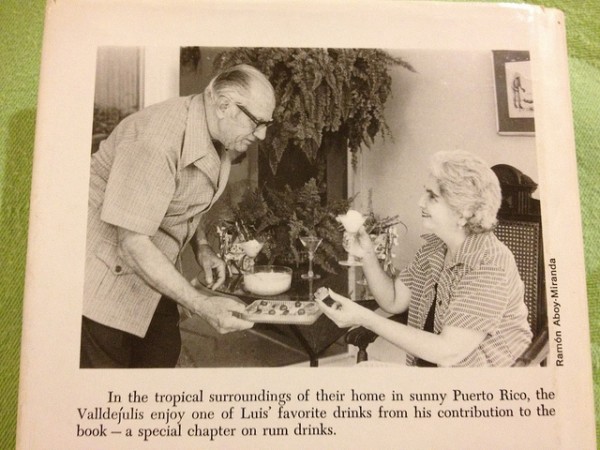
Predictably, the pasteles recipe is an intimidating list of ingredients (yautia? achiote? banana leaves? sour orange juice?) and instructions (crushing in a mortar? removing the skins from chickpeas? wrapping in parchment paper?). Its authenticity was confirmed in the voice of my mother telling me that making pasteles is a daylong commitment and did I really want to bother? Gauntlet, thrown down.

Here’s the exhaustive recipe, as I’ve adapted it from Puerto Rican Cookery. It blends groups of ingredients with prep steps, handily and, at times, confusingly. Quantities below yield of 36 pasteles (!!), but I cut the recipe roughly by ⅔ to get about a dozen. Less commitment if you don’t like the result. In which case, you are dead to me.
THE FILLING

• 2 lbs. lean pork meat, uncooked
• 6 tablespoons jugo de naranja agria (sour orange juice, which I could not find, so I just used straight-up orange juice)
• 4 sweet chili peppers, seeded
• 2 cloves garlic
• 2 tbsp. oregano
• 4 leaves fresh culantro (I used cilantro, since I could not find culantro, except in the achiote seasoning)
• 1 tbsp. salt
• 1 lb. cured ham, cubed
• 1 green pepper, diced
• 1 onion, diced
• 1 ½ cup raisins
• 1 can garbanzo beans (with liquid)
• 1 cup water
• 24 olives with pimentos, chopped finely
• 1 ½ tbsp. capers
• 6 tbsp. achiote seasoning
Rinse and dry the pork meat, chop it coarsely, and mix with the orange juice. I assume this has some sort of ceviche effect on the raw meat. Who knows, just do it. I’ve seen recipes where the pork is cooked, but I stayed true to Valldejuli’s version, and did not die.
Next, crush the chili peppers, garlic, oregano, culantro (or cilantro) and salt with a mortar and pestle. Add the results to the pork mixture, along with the ham, peppers, onion and raisins, mixing thoroughly.
In a saucepan, bring the garbanzos and liquid and water to a quick boil. Pour the liquid over the meat mixture, and remove the skins from the remaining garbanzo beans (if anyone knows an easier way than doing it by hand, one-by-one, I’m all ears!) before adding them to the whole mess. Toss in the olives and capers, the achiote seasoning, and mix everything together while marveling that this entire mixture exists in the first place. Cover it and place in the fridge. The masa is next, so maybe sit down for a breather and have a quick glass of port or something to steel your nerves.
THE MASA

Ready to freak out? Haven’t already? Let’s get ready to make a starchy paste out of unripe bananas and tubers you’ve never heard of!
• 4 lbs. white yautia, peeled
• 4 lbs. yellow yautia, peeled (look, if you are lucky enough to find yautia, just go with what you can find…I found the white ones, and just doubled the amount)
• 15 green bananas, peeled and rinsed in salt water
• 2 cups lukewarm milk
• 10 oz. achiote seasoning
• 2 ½ tbsp. salt
I was lucky enough to find yautia at Steve’s C-Town in Park Slope, along with most of the difficult-to-source ingredients. It seemed like they knew I was coming: I found parchment paper next to the yautias, which rang up as “pasteles paper.” Yautia is a starchy, pale-fleshed, slippery root vegetable that I’ve never even considered before I embarked on pasteles-making.
Wash, drain, and grate the yautias and bananas. Traditionally, a mortar and pestle was used to crush these two ingredients together, gradually adding the milk as you went. Trust me when I say that a food processor is a huge asset here, even though I hate cleaning up after using a food processor (yeah, I know: First World Problems, yadda yadda). Grate the yautias and bananas first, then drop them in the food processor, and pulse while slowly adding the lukewarm milk until you get a nice smooth grainy pasty sort of an arrangement. Stop before it completely liquefies. You’ll know.
Transfer to a bowl and add the achiote coloring and salt. Goya makes a convenient achiote and culantro seasoning mix, which was perfect for this recipe. However, I used all of it in the filling, so I had to substitute with achiote paste. Turns out, you need a lot of it, and the resulting color turns the masa into a pleasant brick red.
THE ASSEMBLY
Here comes the fun part! Ever worked with banana leaves? Me neither! But if you can’t find them — super-brand Goya offers banana leaves that I found in C-Town’s freezer case — you can always use plain parchment paper. If you can find banana leaves, you’re gonna use both.
Goya’s packages of frozen banana leaves are nicely portioned: once you defrost them, it’s easy to divide them into 12×12-inch squares. They are a bit fragile and seem to tear easily, so be careful since breaches in the leaves result in a messy leak of masa and filling during assembly. Wipe the inside of the leaves with a damp paper towel, and set them aside for your assembly line.
(While I’m recommending cutting the ingredients by ⅔ to yield about a dozen pasteles, you’re going to want to use the following measurements for assembly to ensure the correct robust portions.)
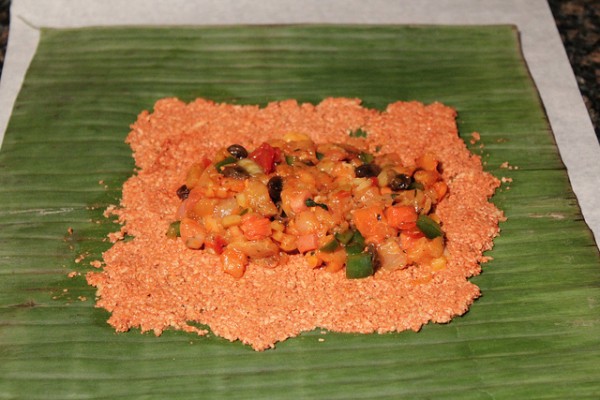
Spread about 3 tablespoons of the masa on a banana leaf, smoothing it out until it is almost transparent and about 2 inches from each edge of the banana leaf. Best bet is to use the back of a spoon to scoop and then distribute the masa on the banana leaf. Then plop 3 tablespoons of the filling into the center of the masa.
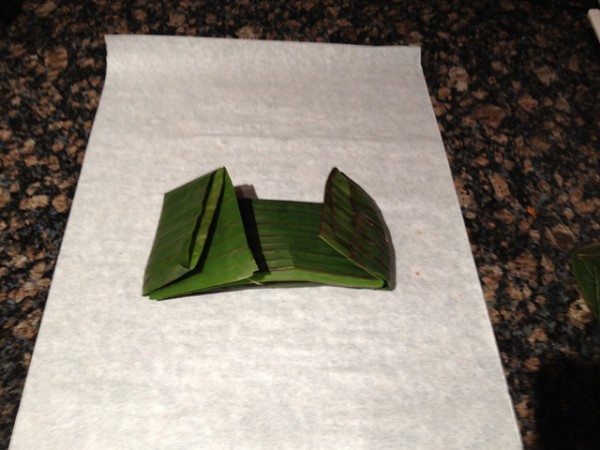
Fold the bottom edge of the banana leaf up to meet the top edge, then fold the resulting bottom crease up to meet the top edges again. Now fold the sides in towards the middle like little wings, and place flaps-down on a sheet of parchment paper. Fold the parchment paper over the wrapped pasteles in a similar manner as you did with the banana leaves, and tie them off with butcher’s string. You’re now left with tidy little packages of Puerto Rican goodness. Tie them together in pairs, with the seams facing each other.
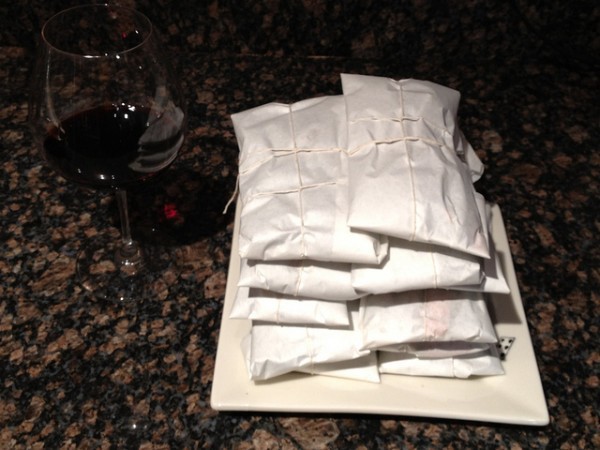
Now what are you supposed to do with them? Bring a pot of lightly salted water to boil, and drop in the pairs of pasteles, parchment paper and all. Cook, covered, for 1 hour, flipping them over halfway. When finished, remove them from the water immediately, remove the parchment paper and serve.

Unwrapping the first pasteles we cooked was nerve-wracking: after all we’d been through in terms of sourcing, prepping, and assembling the damned things, they could never live up to my memory or the anticipation of building them. The familiar aroma, however, immediately reassured and calmed me (along with a couple of glasses of red wine). They say the sense of smell is the strongest trigger of memory, and I was instantly transported back to my grandmother’s kitchen, listening to my grandfather lecturing me on the importance of changing the oil in my car. While I remember pasteles as having more of a greenish hue, the brick-red tamale shape of these wasn’t altogether unfamiliar. The first bite confirmed I’d hit the jackpot. Not only were they empirically awesome (if I do say so myself), my pasteles immediately conjured and compared favorably to the flavors I remembered from my youth, right down to the texture of the masa and richness of the filling.

My wife and I enjoyed the first two pasteles of the batch, and froze the rest for the holidays. Somehow, I’d pulled it off. We’ll see if my mother agrees.
Previously in series: My Attempt To Make Jamaican Escovitch Without The Burn
John Ore has a freezer full of extra banana leaves, if you need some.
Trick Your Stupid Brain Into Thinking You Don't Suck
“In a new study, researchers found that when people wrote down their unwanted negative thoughts on a piece of paper and then threw the paper away, they mentally discarded the thoughts as well.”
Airlines, By Level of Evil

10. Southwest
9. Virgin Atlantic
8. Frontier
7. Alaska
6. JetBlue
5. American
4. Continental
3. Delta
2. U.S. Airways
1. Northwest
666. United
Photo by Nicola.
Why We Supercut
“[T]he supercut craze is really just a small indicator of a larger development. The average Joe is seizing a media Jedi power once restricted to a lucky few. We can rigorously shame TV shows when they go to the same well a few times too often. We can passionately recut Star Wars movies to fix them, spitting in the face of George Lucas’ aesthetic choices. And yes, supercuts can be art.”
Marvin Miller, 1917-2012
“Marvin Miller, the baseball players ‘Moses’ who freed them from the shackles of servitude and won them previously-unimaginable gains in salary, working conditions and licensing and pension benefits through hard-nosed collective bargaining, died early Tuesday in Manhattan after a year-long battle with cancer. He was 95. As the first executive director of the Players Association, from 1966–84, Miller retired undefeated in his many battles with the baseball owners who had been accustomed to running the game under their own terms for more than a century. Their one consoling ‘victory’ over him was denying him his rightful place in the Hall of Fame as one of the most impactful figures in the game’s history.”
